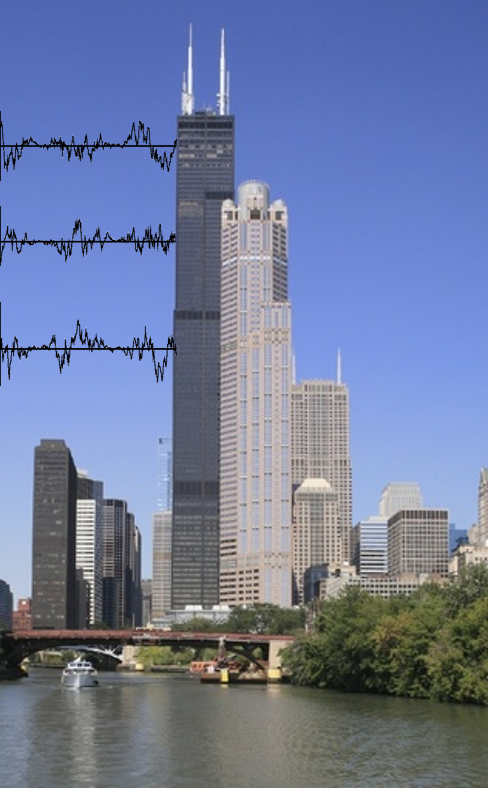CEE 358/458 - Random Vibrations
CEE 358/458 covers the theory of random functions (stochastic processes and random fields) and their application to engineering problems. The first module of the course is devoted to characterization and calibration of random functions (with examples from earthquake engineering and wind engineering), as well as an introduction to stochastic calculus. The second module of the course covers how the uncertainty in a random functions propagates through a linear system with multiple degrees of freedom, with emphasis on analytical solutions (examples from structural dynamics). The third module of the course covers numerical simulation of random functions, for the solution of generalized stochastic problems (linear and non-linear). The 400-level version includes a project where each student can choose any stochastic problem they are interested in, and solve it by simulation. The 300-level version has simplified assignments.
Prerequisites
Previous knowledge in probability and in structural dynamics is helpful, but not required, since all the necessary concepts are reviewed in class. Students who have not passed CEE 352 should contact the instructor to obtain permission to register.
Why is it interesting for Probabilistic Modelers?
A substantial portion of the course is dedicated to the theory of random functions, presented for an audience of non-mathematicians, which can be appealing for most engineering & science graduate students. The second half of the course focuses on the development and use of software tools for the simulation of random functions of any kind, which can be applied to the solution of problems involving uncertainty distributed over time or space. There is complete flexibility on the final project: each student will be allowed to tailor it to their scientific interests, the only requirement is to use the tools for simulation covered in the course.
Schedule
Offered in the Spring Semester, MW 11:10–12:25

